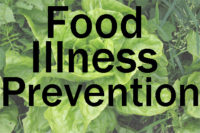TECH FLASH
USDA reports 14.9 percent of American households are food insecure


USDA monitors the extent and severity of food insecurity in US households through an annual, nationally representative survey sponsored by USDA’s Economic Research Service (ERS). Every year, a report presents statistics from the survey covering households’ food security, food expenditures and use of food and nutrition assistance programs.
The 2011 report found the percentage of US households that were food insecure remained essentially unchanged from 2010 to 2011, while the percentage with food insecurity in the severe range—described as very low food security—increased. In 2011, 85.1 percent of US households were food secure throughout the year. However, the remaining 14.9 percent (17.9 million households) were food insecure. Food-insecure households (those with low and very low food security) had difficulty at some time during the year providing enough food for all their members due to a lack of resources. The change from the 2010 estimate (14.5 percent) was not statistically significant, meaning the difference may be due to sampling variation.
In 2011, 5.7 percent of US households (6.8 million households and one-third of all food-insecure households) had very low food security. In these households, the food intake of some household members was reduced, and normal eating patterns were disrupted at times during the year due to limited resources. The prevalence of very low food security returned to the level observed in 2008 and 2009, a statistically significant increase from the 5.4 percent level of 2010.
The entire report, Household Food Security in the United States in 2011, can be downloaded on the USDA ERS website.
Looking for a reprint of this article?
From high-res PDFs to custom plaques, order your copy today!






